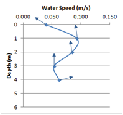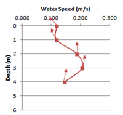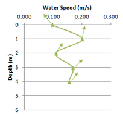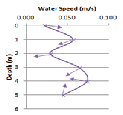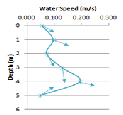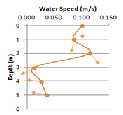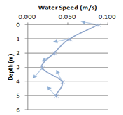


All the information shown on this website are our own views and not those of the NOCs or the University of Southampton



CURRENT METER.
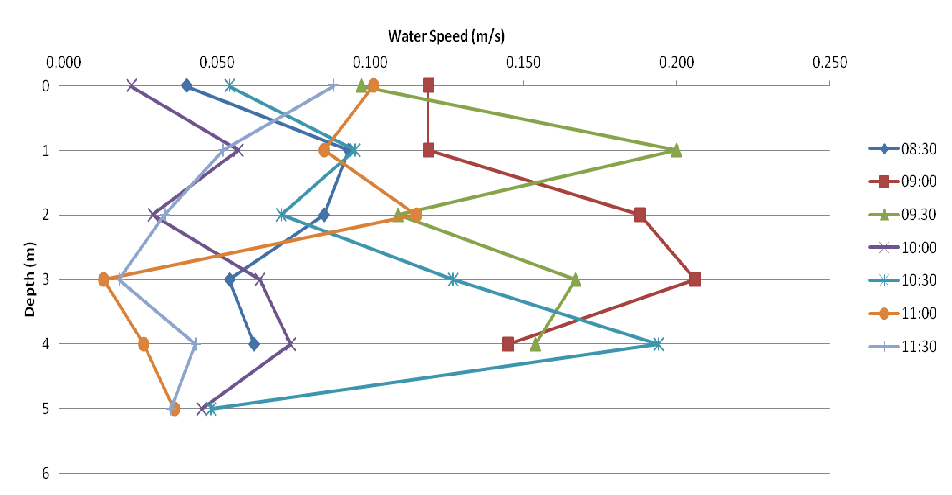
On the 26th of June, low tide was 07:13 UTC. As a result the fastest flow was observed in the early morning where the total volume of water within the estuary was at its lowest. As the tide changed to high tide, the volume of water within the estuary increased and as a result the speed of the water decreased.
Figure 2.3. Shows current speed against depth at 30 minute time intervals
Figure 2.3. Shows current speed and direction against depth at 8:30 UTC
Figure 2.3. Shows current speed and direction against depth at 9:00 UTC
Figure 2.3. Shows current speed and direction against depth at 9:30 UTC
Figure 2.3. Shows current speed and direction against depth at 10:00 UTC
Figure 2.3. Shows current speed and direction against depth at 10:30 UTC
Figure 2.3. Shows current speed and direction against depth at 11:00 UTC
Figure 2.3. Shows current speed and direction against depth at 11:30 UTC
At 08:30, the dominant direction of flow throughout the water column was Northerly. However at the surface the direction of flow was North Westerly which would have been controlled by surface winds skewing the direction of flow. As a result of counter acting forces the water speed is very slow at 0.040 m/s. At 4 meters local hydrodynamics would have resulted in the direction of flow being North Easterly, for example the passing of boats or the pontoon itself.
At 09:00, it was recorded that the winds had become stronger, and that is evident in the profile as the top metre of the water column became influenced by this external force. The stronger winds caused the top meter to be travelling at a speed of 0.119m/s in a North Westerly direction. For the rest of the water column the dominant direction of flow is Northerly. This would be due to the tide changing state to high tide and so there is dominant flow of water up the estuary.
At 09:30, the winds became less influencing and only affected the surface of the water, causing it to flow in a North Westerly direction at a speed of 0.097m/s. Throughout the rest of the water column the dominant direction of flow is North-North Easterly, again being influenced by the tidal state of the estuary.
During the time the reading were collected at 10:00 the local ferry was docking the pontoon. The consequent wash and movement of the pontoon itself is the main reason for the direction of the flow being as it is, with the surface ,intermediate and bottom water flowing in different directions.
At 10:30 the dominant direction of flow is South Easterly. A change in the wind direction would have caused the surface flow to change direction to South Easterly at a speed of 0.054m/s. However the passing of a vessel and the local hydrodynamics would be the cause for the flow direction for the rest of the current profile.
At 11:00, the stronger winds influenced the top two metres of the water column, altering the flow to Southern direction at a speed between 0.085m/s and 0.115m/s. From three to five metres the dominant direction of flow is in a South Westerly direction and at a very slow speed, reaching as low as 0.013m/s at three metres.
At 11:30, there is no clear dominant flow direction. It is possible that there was a passing vessel which altered the local hydrodynamics of the area due to the wash created.
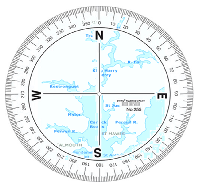 Back to the top
Back to the top
| Biological |
| Chemical |
| Physical |
| YSI Probe |
| Current Meter |
| Chlorophyll |
| Sidescan Sonar |
| Underwater Video |
| Poster |
| Biological |
| Chemical |
| Physical |
